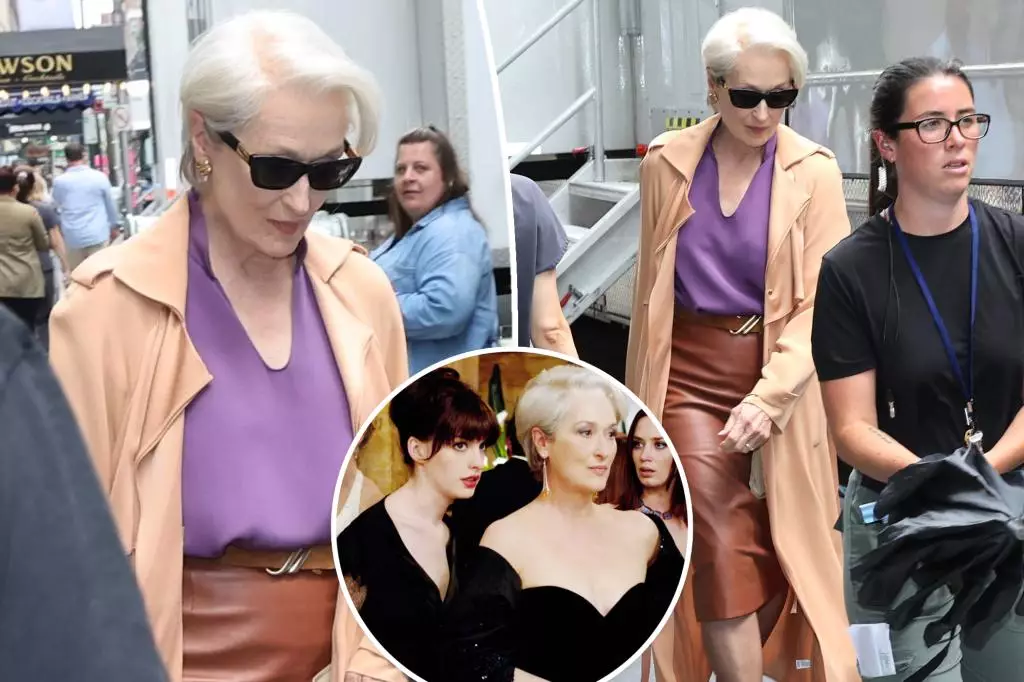The excitement surrounding the filming of “The Devil Wears Prada 2” marks more than just a sequel; it signifies a cultural revival rooted in the legacy of a franchise that defined fashion and power dynamics in media. Meryl Streep’s return as Miranda Priestly isn’t simply nostalgic—it’s a strategic move asserting that strong female characters remain vital to contemporary storytelling. Her portrayal set a benchmark for complex, commanding women on screen, and her comeback amplifies the message that such characters still resonate powerfully today.
This resurgence embodies a broader societal desire to see women in leadership roles depicted with nuance and authority. With Priestly’s character representing an institution’s ruthless yet magnetic heart, her reappearance injects confidence into audiences who crave stories of resilience and influence. Beyond entertainment, it’s about reclaiming narratives of female power from the stereotypical to the sophisticated, proving that captivating female characters can evolve without losing their core strength.
Fashion as a Statement of Cultural Relevance
The set images reveal a remarkable continuity in the film’s aesthetic—Streep sporting her signature icy white pixie cut and sleek designer ensembles signals a dedication to authenticity. Fashion, in this context, ceases to be mere costume; it becomes a statement about cultural longevity and influence. Priestly’s wardrobe choices—long trench coats, leather skirts, sophisticated sunglasses—are visual ethos of command and elegance, underscoring her unwavering authority despite the shifting landscape of the publishing world.
Meanwhile, Anne Hathaway’s nostalgic nod to the original film through her cerulean sweater isn’t just fan service; it symbolizes the legacy of the franchise and the enduring power of iconic color cues in fashion storytelling. The film’s ability to draw from its roots while pushing into new creative territory exemplifies how style is intertwined with identity, reinforcing that the visual language of authority and glamour is a cultural constant.
The Meticulous Revival of a Cultural Phenomenon
What makes “The Devil Wears Prada” franchise compelling isn’t solely its fashion but its sharp commentary on ambition, power, and human complexity. Returning cast members like Hathaway, Blunt, and Tucci, alongside new faces, promise fresh perspectives that will deepen the narrative’s richness. The inclusion of notable actors like Kenneth Branagh, Lucy Liu, and Justin Theroux hints at a story that isn’t just about fashion but about the shifting terrains of influence and personal identity.
Hathaway’s social media posts, with glimpses of her stylish costumes reminiscent of the original, suggest a deliberate blending of past and present—a testament to how franchise histories can be harnessed to make powerful cultural statements. The recurring theme is clear: while fashion and media evolve, the core themes of ambition and authenticity remain steadfast. The sequel’s setting amid the decline of traditional magazine publishing underscores that even institutions built on glamour are vulnerable, making Priestly’s commanding presence more poignant than ever.
Behind the Scenes: The Difficult Reality of Portraying Iconic Roles
Meryl Streep’s candid revelation about her struggles with embodying Miranda Priestly underscores the often-overlooked emotional toll of portraying such formidable characters. Her admission that playing Priestly was a miserable experience reveals an important truth about the cost of embodying power. Yet, her willingness to return indicates a deep understanding of her character’s significance—not just for her career but for cultural discourse.
This authenticity adds a layer of depth to the upcoming sequel. Viewers can expect a narrative that examines the price of authority, the loneliness behind power, and the personal sacrifices made to maintain a commanding presence. It’s a reminder that even the most seemingly unassailable figures have vulnerabilities—an essential narrative shift that enriches the franchise’s relevance.
The Future of the Franchise and Cultural Impact
As “The Devil Wears Prada 2” prepares for release, its significance transcends the screen. It exemplifies how franchises rooted in style and substance adapt to modern realities. In a landscape where traditional media is waning, the film’s focus on the decline of magazine publishing indicates a broader commentary on the transformation of influence and the persistence of personal power.
This sequel is more than a continuation; it’s a statement on resilience and relevance, showing that iconic characters can evolve without losing their essence. The inclusion of new cast members and contemporary storytelling approaches suggests a deliberate effort to extend the franchise’s cultural impact into a new era. It challenges the audience to rethink notions of authority, femininity, and professionalism, reminding everyone that true influence often involves navigating change with style and grit.
In the end, “The Devil Wears Prada 2” isn’t just about fashion or a beloved character returning to our screens—it’s about asserting that power, influence, and authenticity are timeless qualities that can adapt and thrive through generations.

Leave a Reply